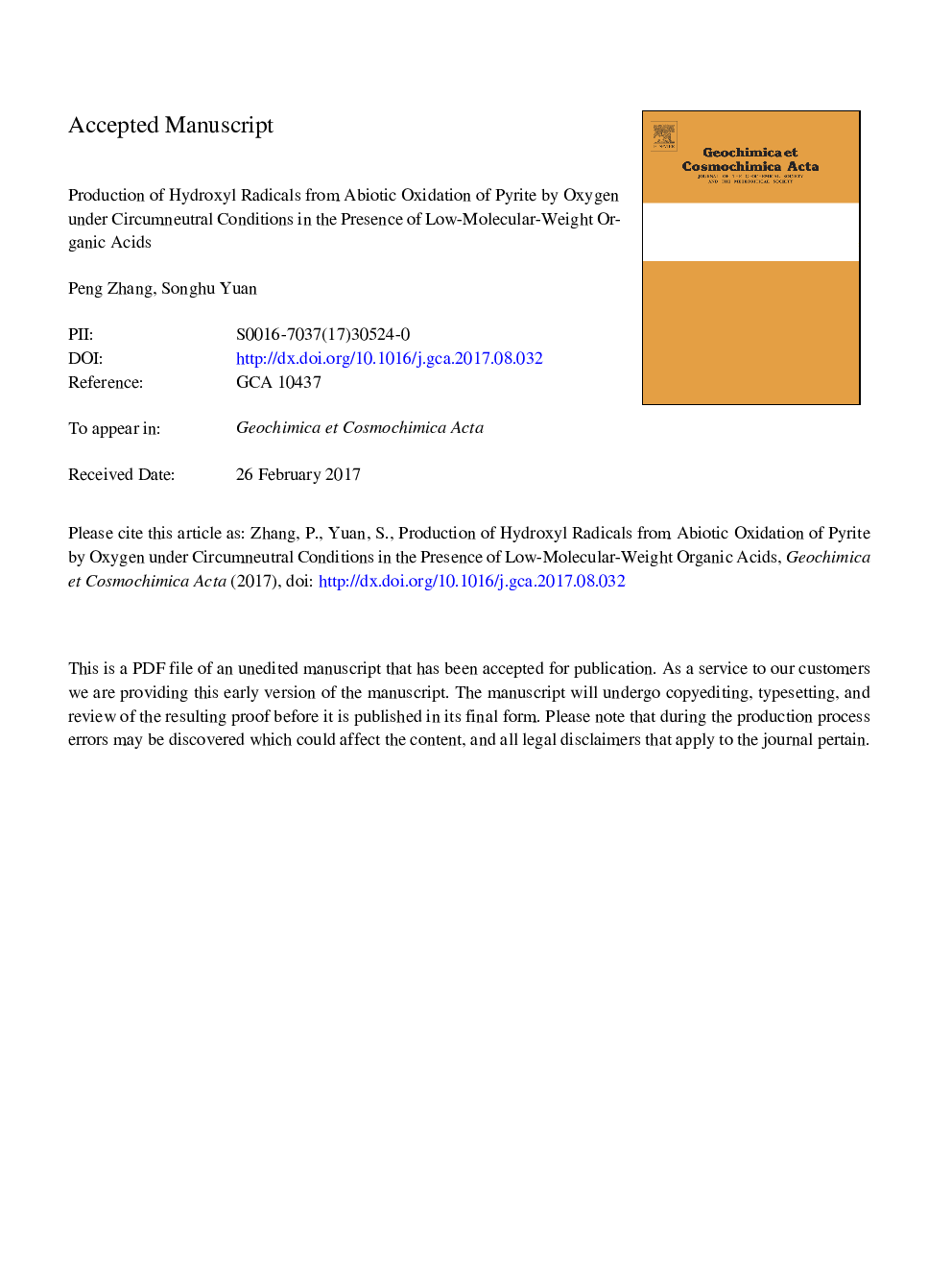| Article ID | Journal | Published Year | Pages | File Type |
|---|---|---|---|---|
| 5783304 | Geochimica et Cosmochimica Acta | 2017 | 52 Pages |
Abstract
In the absence of LMOWAs, OH is produced mostly from the oxidation of adsorbed Fe(II) by O2. In the presence of citrate, OH production is attributed mainly to the oxidation of Fe(II)-citrateâ by O2 and secondarily to the oxidation of H2O on surface-sulfur defects. The acceleration of pyrite oxidation by Fe(III)-citrate increases OH production. Fe(II)-citrateâ is generated mainly from the complexation of adsorbed Fe(II) by citrate and the reduction of Fe(III)-citrate, and the generation is suppressed by the oxidation of adsorbed Fe(II). Fe(III)-citrate is generated predominantly from Fe(II)-citrateâ oxidation. Most soluble Fe3+ that is produced from pyrite oxidation hydrolyzes to Fe(III) hydroxide. Kinetic models that were developed according to the proposed mechanisms identified the relative importance of each reaction for OH production. Using the kinetic model, the oxidation efficiencies of the redox-active substances that react with OH at different reaction-rate constants were estimated in the presence of 1Â mM citrate. This study presents on the overlooked role of LMWOAs in enhancing OH production from pyrite oxidation by O2 in pyrite-rich circumneutral environments, such as marine and estuarine sediments and salt marshes.
Related Topics
Physical Sciences and Engineering
Earth and Planetary Sciences
Geochemistry and Petrology
Authors
Peng Zhang, Songhu Yuan,
